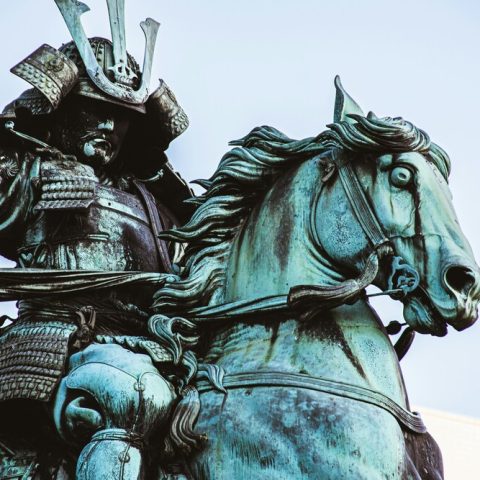
One of the most important aspects of Japan’s food culture is the presentation of the meal. Both the food itself and the dishes used, create appetizing meals that are served at home and in restaurants across the country. Within Japanese tableware, each plate and bowl has its own place on the table, with meals commonly using a number of different dishes of varying sizes, shapes, and designs. These dishes are used to create an aesthetic dining experience, allowing people to not only enjoy the flavors of the meal, but the visual presentation as well.
Now let’s look at the role Mamezara have as the smallest plates used within Japanese tableware.

Photo credit: Richard Iwaki on Unsplash
What are Mamezara (豆皿)?
Mamezara are tiny plates that comfortably fit in the palm of a hand and are about 6-10cm in diameter. The name mamezara directly translates as “bean plate”, with the mame (豆) meaning bean and zara (皿) plate – bean refers to the size of the plates rather than plates used specifically for beans. These tiny plates are commonly used to serve condiments, pickled vegetables, or a small portion of food during meals.
Not all mamezara look like typical flat plates, as some may have curved edges almost resembling a bowl. Multiple mamezara of various shapes and designs can be used during a meal, allowing people to be creative when plating food and in a sense creating art on the table.

Photo credit: Faran Raufi on Unsplash
The History of Mamezara
Mamezara have a long and rich history dating back to the early Edo period (1603-1867). These tiny plates are said to have originated in Arita, a city in the Kyushu Prefecture renowned for its pottery. The name mamezara is relatively recent as these plates were initially called teshiozara (手塩皿), which directly translates as “hand salt plate”. Originally, teshiozara containing salt were placed beside chopsticks on a table to purify the meal. Over time, the name and purpose of these plates has evolved into the mamezara we know today.

Photo credit: Juan Encalada on Unsplash
The Art of Mamezara Today
Mamezara have recently been rising in popularity across Japan. Many people around the country choose to collect these plates as they are small and extremely useful. Aside from the main function of mamezara as plates to hold food or condiments during meals, these tiny plates can be used in countless other ways. Other food related uses include being a chopstick rest or to serve snacks for yourself or guests at any time of the day.
These tiny plates can also be utilised in numerous ways outside of the dining room, such as trinket trays to hold jewellery, stationery, and candles, or simply a souvenir to remember your time in Japan. Mamezara are usually inexpensive and can even be found at 100-yen stores around the country. With the countless possible uses and affordable prices, it’s easy to see why these tiny plates have become so popular over the years.

Photo by: aburakame.web.fc2.com
All Different Shapes and Colors
One aspect that makes mamezara stand out is the variety of shapes, colors, and designs. These tiny plates can be made in numerous types of materials including clay, ceramic, glass or even wood. Mamezara are commonly circular, however these tiny plates can come in any shape from squares to flowers to animals. A common design seen on mamezara are patterns influenced by the era they originated, the Edo period. However, there is no limit for these tiny plates, as even big brands across Japan have sold mamezara displaying their popular characters.
Next time you’re in Japan, make sure to check out the array of mamezara available at shops or used at restaurants across the country. These tiny plates are an excellent item to collect or buy as souvenirs for yourself, family, or friends. With an endless variety of designs, colors, and shapes, you’ll be sure to find a mamezara to suit your style!
Featuring photo by Richard Iwaki on Unsplash
Join us on a food tour in Tsukiji to visit a local shop where you can buy beautiful mamezara!




